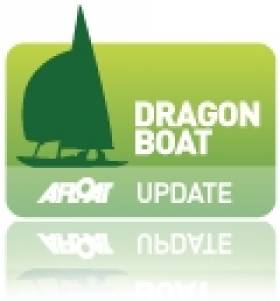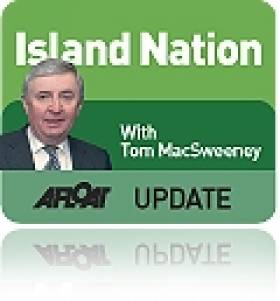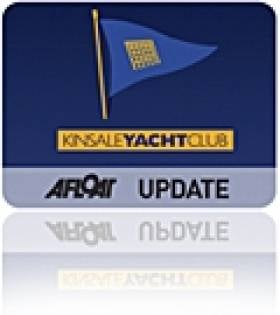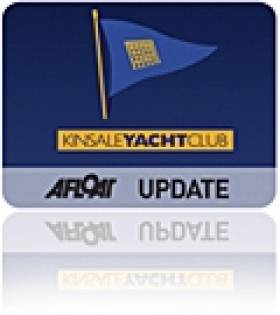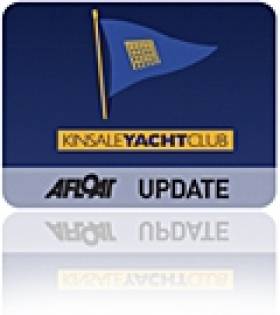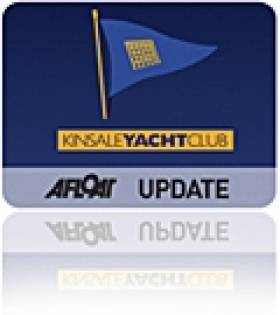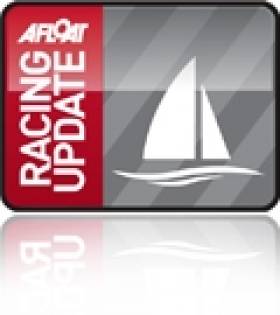Displaying items by tag: Dragon
Dun Laoghaire Trio Stay Mid-Fleet at Dragon Worlds
Irish Match Racing Gets Recognition it Deserves
Match Racing has been given full approval by the national sailing association. I reported a few weeks ago that Match Racing Ireland, which organises the racing, had made application to the Irish Sailing Association. This has been approved.
"We are now a recognised Category 3 organisation within the ISA and hope this will mean we can send a representative to the All-Ireland championships, dependent on an invitation to us. Being recognised as a formal body is important for funding or when individual teams need support at international events," Ric Morris of Match Racing Ireland told me. "Bringing people through from college sailing is something we are very interested in and we are at the moment targeting the 2012 World University Match Racing Championships in France."
That may mean having to get hold of a couple of J24s, the boats used for that event. Match racing here has so far been concentrated in the ISA J80 fleet. Ric said he was "confident match racing will continue to flourish. The question will be the scope of it. Howth, Lough Derg and Dun Laoghaire clubs have confirmed they will run match racing next year."
Next month Kinsale will be the location for two match racing events - the ISA Women's Match Race Championship on October 9 and 10 followed by the Open Match Racing Championships from October 22-25.
Dragons Are Still Alive
The English are known for preferring that the rest of the world would speak their language. That attitude resulted in a Norwegian-designed yacht being called a Dragon.
Sailed by a helm and crew of two, it was designed by Norwegian Olympic sailor, Johan Anker, in 1929 with two berths for cruising in his home waters. The boat became so popular that, within ten years, it had spread all over Europe and become established in the top echelons of yacht racing. The Clyde Yacht Association presented the Gold Cup to the class in 1937.

Dragons competing off Kinsale. Photo: Bob Bateman. Gallery HERE.
During negotiations for the official recognition of the boat by the international sailing federation, a translation of Anker's name into 'Draggen' was rejected by the English yachting association which found 'Dragon' easier. The name was applied to the boat. Johan Anker was killed in World War Two. After the war his family waived design royalties to allow English yards build the boats, "as a token of appreciation for British support of Norway" when it was invaded by the Germans. That led to an increase in its popularity.
Dragons raced their South Coast Championship off Kinsale with ranking points to be won for the World and European Championships. Local club sailors were hoping to end class domination by Dun Laoghaire, but just fell short of their target.
Andrew Craig sailing Chimaera took the South Coast title back to the Royal St.George in Dun Laoghaire, while his clubmate Martin Byrne in Jaguar was second. Cameron Good, Henry Kingston and Simon Furney, a long-established Kinsale team sailed Little Fella, to third overall, with club colleague James Mathews helming Diva, crewed by Rick and Rob Johnson in fourth.
I have heard the Dragons described as "old worldly" but the class is alive and well to judge from the racing in plenty of breeze off Kinsale, where the Dragon Gold Cup, a world event, will be held in 2012. Kinsale Yacht Club will also host the national championships next year.
KYC is and will be, a busy place.
• This article is reprinted by permission of the CORK EVENING ECHO in which Tom MacSweeney writes maritime columns twice weekly. Evening Echo website: www.eecho.ie
Kinsale Dragon Photos HERE!
Craig Lifts South Coast Dragon Title
Andrew Craig won the first race with the current National Champion Martin Byrne's Jaguar (IRL201) finishing second and Kinsale's Little Fella (IRL211) helmed by Cameron Good and crewed by Simon Furney and Henry Kingston in third.
Martin Byrne with Adam Winkelman and Pedro De Andrade won the final race, their third bullet of the regatta, and Andrew Craig finished in second to clinch the title. Garry Treacy's Dublin Bay (IRL198) crewed by Olympic Star campaigners, his son Max and Anthony Shanks, took third place.
The Royal St George Yacht Club's Andrew Craig was followed by fellow club member Martin Byrne in second place overall with Kinsale Yacht Club's Cameron Good in third and James Matthews in fourth. The George completed the podium with Garry Treacy in fifth and Neil Hegarty in sixth.
At the prize-giving Andrew Craig complemented Kinsale Dragon fleet Class Captain Anthony O'Neill on an excellent regatta.
Overall Standings;
1. IRL192 Chimaera Andrew Craig RStGYC
2. IRL201 Jaguar Martin Byrne RStGYC
3. IRL211 Little Fella Cameron Good KYC
Race 5
1. IRL192 Chimaera Andrew Craig RStGYC
2. IRL211 Little Fella Cameron Good KYC
3. IRL201 Jaguar Martin Byrne RStGYC
Race 6
1. IRL201 Jaguar Martin Byrne RStGYC
2. IRL192 Chimaera Andrew Craig RStGYC
3. IRL198 Dublin Bay Garry Treacy RStGYC
Full results HERE
The 2011 Dragon Irish National and Open Championship will be held at Kinsale, the venue for the 2012 Dragon Gold Cup.
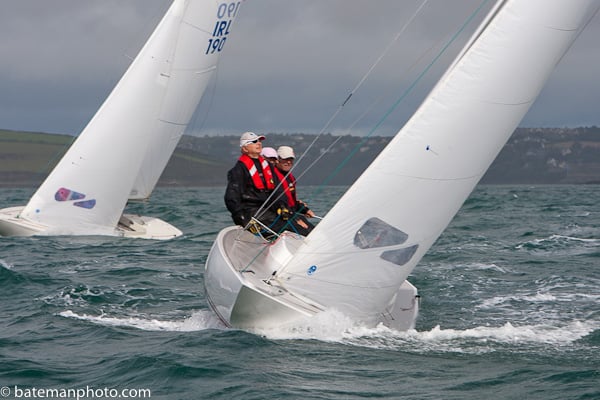
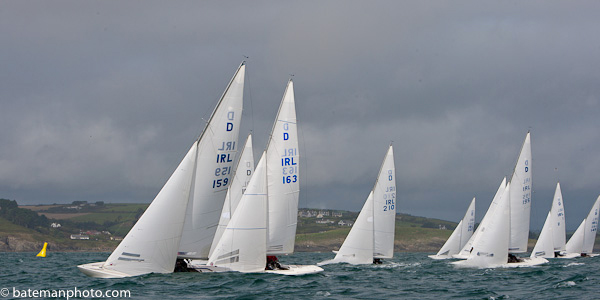
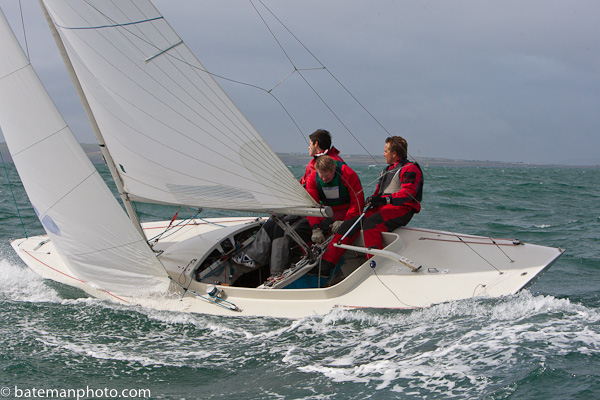
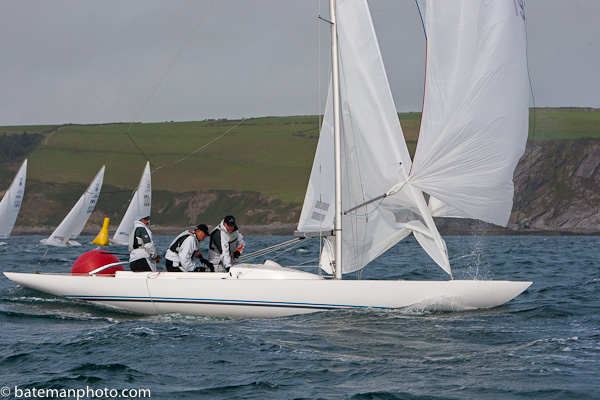
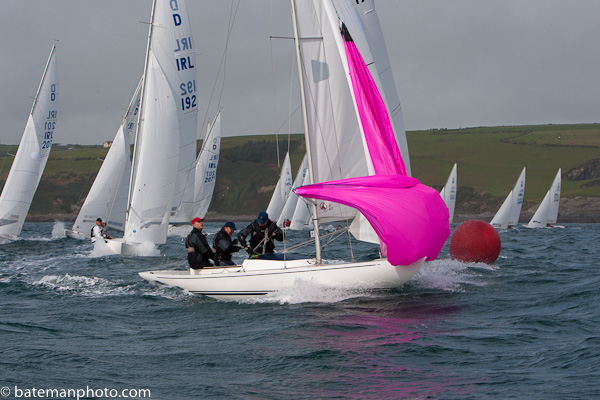
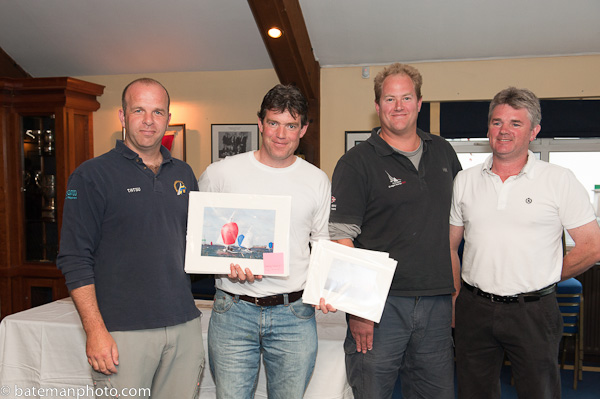
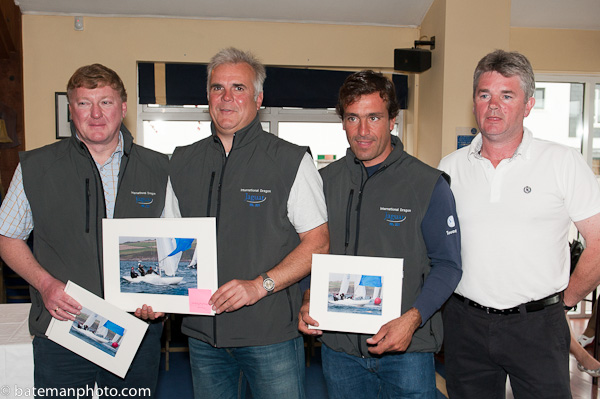
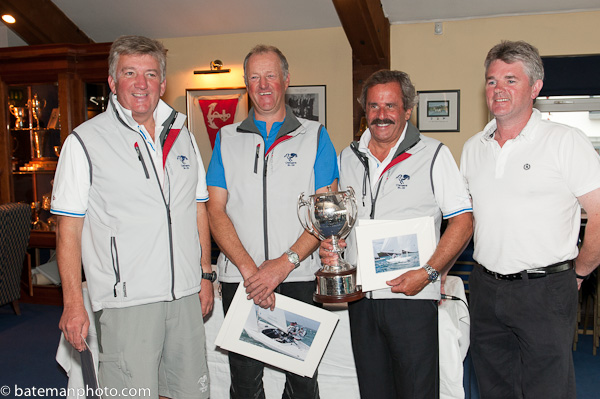
Ideal Conditions for Dragon South Coasts (Photos Here!)
Racing conditions were ideal with a steady 16 knot breeze from the south west, though the sea state was confused from an Atlantic system that luckily had passed through during the previous night.
Today was all about consistency as Jaguar, crewed by Pedro De Andrade and Adam Winkelman showed the rest of the fleet their excellent boat speed. Chimaera helmed by Andrew and crewed by Brian Matthews and Mark Pettit was equally consistent with two second places and Little Fella helmed by Cameron Good with Simon Furney and Henry Kingston followed with three third places.
Racing continues tomorrow with two further races.
1.IRL201 Jaguar Martin Byrne RStGYC 1 1
2.IRL192 Chimaera Andrew Craig RStGYC 2 2
3.IRL211 Little Fella Cameron Good KYC 3 3



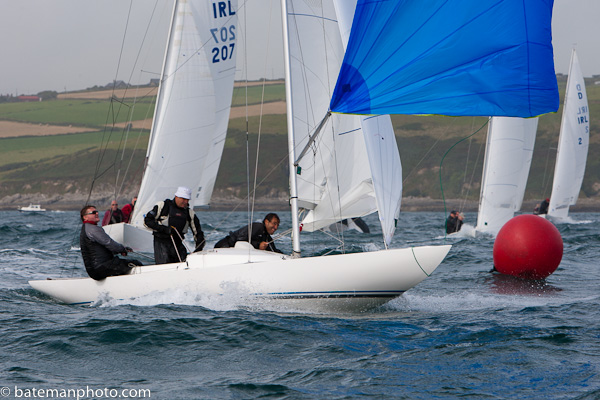
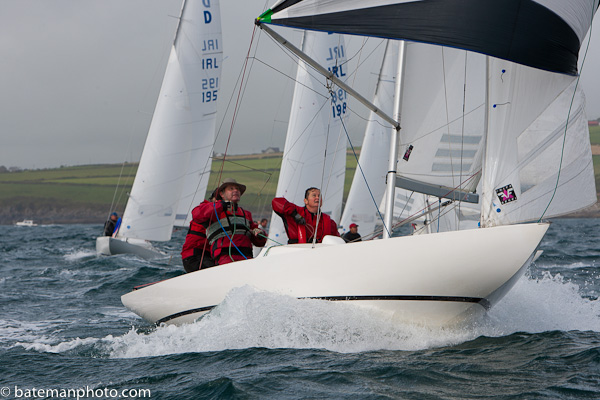
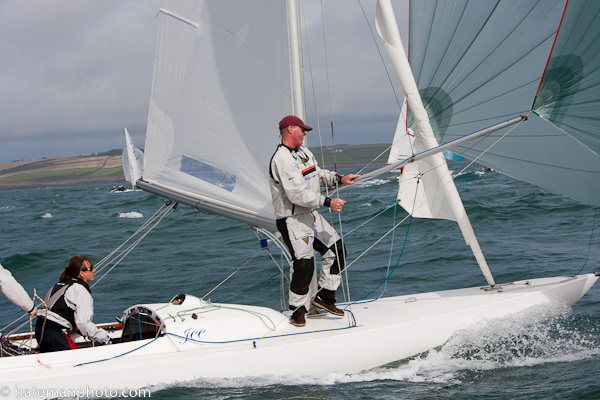
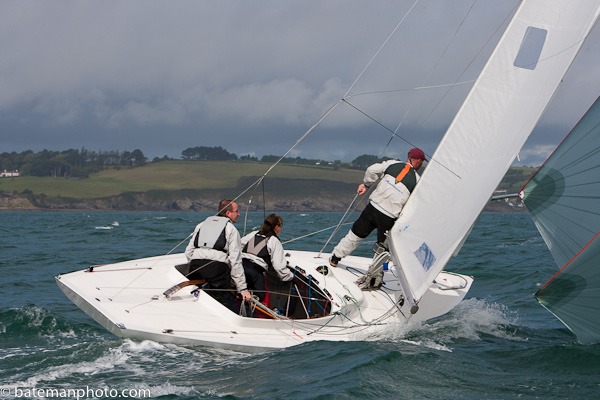
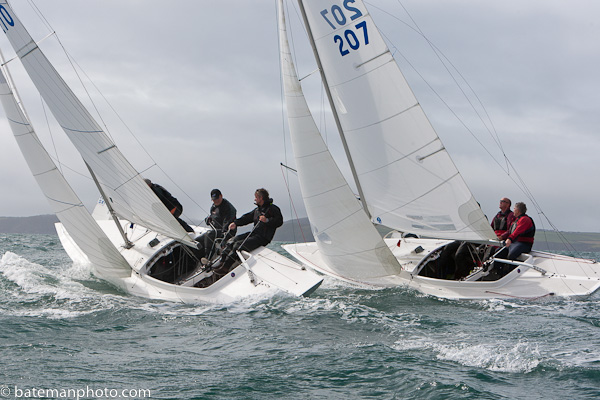
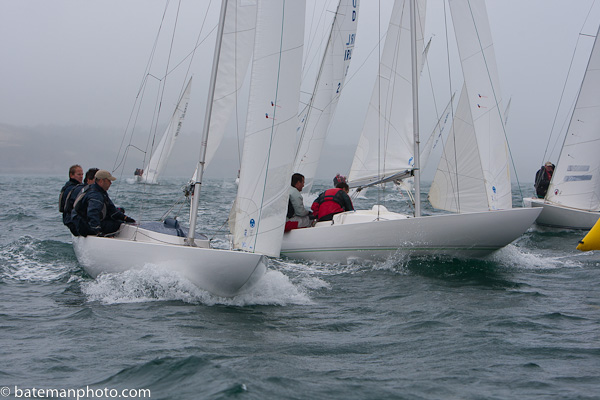
Byrne Takes the Lead in Kinsale
Susele is DBSC Dragon Race Winner
BENETEAU 31.7 - 1. Bluefin Two (M & B Bryson), 2. Prospect (Chris Johnston), 3. Fiddly Bits (Kevin Byrne et al)
BENETEAU 31.7 Echo- 1. Fiddly Bits (Kevin Byrne et al), 2. Bluefin Two (M & B Bryson), 3. Violet Flame (B.Murphy/L.Osbourne)
CRUISERS 0 Echo - 1. WOW (George Sisk), 2. Tsunami (Vincent Farrell), 3. Tiamat (Tim Costello)
CRUISERS 0 - 1. WOW (George Sisk), 2. Tsunami (Vincent Farrell), 3. Tiamat (Tim Costello)
CRUISERS 1 Echo - 1. Gringo (Tony Fox), 2. Jura (Barry McCabe), 3. Raptor (D.Hewitt et al)
CRUISERS 1 - 1. Gringo (Tony Fox), 2. Raptor (D.Hewitt et al), 3. Jalapeno (Dermod Baker et al)
CRUISERS 2 Echo - 1. Free Spirit (John O'Reilly), 2. Bendemeer (Gerald Kinsella), 3. Jawesome 11 (V.Kennedy/M.Dyke)
CRUISERS 2 - 1. Jawesome 11 (V.Kennedy/M.Dyke), 2. Bendemeer (Gerald Kinsella), 3. Peridot (Jim McCann et al)
CRUISERS 3 Echo - 1. Jammie Dodger (J.H & D.O'Neill), 2. Wanderlust (E.& J.Melvin), 3. Chouskikou (R.Sheehan/R.Hickey)
CRUISERS 3 - 1. Supernova (K.Lawless et al), 2. Asterix (J.Counihan/F.Meredith), 3. Cries of Passion (Bryan Maguire)
CRUISERS 4 - 1. Ghrazel (Charles Pearson), 2. Rascal (K.Burke/S.Milner)
DRAGON Race 2- 1. Chiang (Iain Finnegan), 2. Zu (P.Dee et al), 3. Zinzan (Daniel O'Connor et al)
DRAGON Race 1- 1. Susele (Michael Halpenny), 2. Phantom (D.Williams/P.Bowring), 3. Zu (P.Dee et al)
FIREBALL Race 1- 1. Licence to Thrill (Louis Smyth), 2. Blind Squirrel (Frank Miller), 3. Elevation (N.Colin/M.Casey)
FIREBALL Race 2- 1. Licence to Thrill (Louis Smyth), 2. Blind Squirrel (Frank Miller)
FLYING FIFTEEN Race 1- 1. Hy5ive (D & S Gorman), 2. Snow White (Frank Burgess), 3. The Gruffalo (Keith Poole)
FLYING FIFTEEN Race 2- 1. Hy5ive (D & S Gorman), 2. Rollercoaster (Tom Murphy), 3. The Gruffalo (Keith Poole)
GLEN - 1. Glenluce (D & R O'Connor), 2. Glenshesk (L.Faulkner et al), 3. Glengesh (G.Sands/B.O'Connor)
IDRA 14 FOOT Race 1- 1. Dunmoanin (Frank Hamilton), 2. Sapphire (Lorcan O'Sullivan), 3. Dart (Pierre Long)
IDRA 14 FOOT Race 2- 1. Dunmoanin (Frank Hamilton), 2. Dart (Pierre Long)
MERMAID Race 1- 1. Jill (P.Smith/P.Mangan), 2. Kim (D Cassidy), 3. Aideen (B.Martin/D.Brennan)
MERMAID Race 2- 1. Jill (P.Smith/P.Mangan), 2. Kim (D Cassidy), 3. Aideen (B.Martin/D.Brennan)
PY CLASS - 1. Brendan McConville (Wayfarer)
RUFFIAN 23 - 1. Ruff N Ready (Ann Kirwan et al), 2. Diane ll (Bruce Carswell), 3. Ruff Nuff (D & C Mitchell)
SIGMA 33 Race 1- 1. White Mischief (Timothy Goodbody), 2. Rupert (R.Lovegrove/P.Varian), 3. Pippa lV (G.Kinsman/K.Blake/M.O'Brien)
SIGMA 33 Race 2- 1. White Mischief (Timothy Goodbody), 2. Rupert (R.Lovegrove/P.Varian), 3. Pippa lV (G.Kinsman/K.Blake/M.O'Brien)
SQUIB Race 1- 1. Femme Fatale (Joe O'Byrne), 2. Nimble (Brian O'Hare), 3. Periguin (N.Coakley/J.Redahan)
SQUIB Race 2- 1. Nimble (Brian O'Hare), 2. Perfection (Jill Fleming), 3. Femme Fatale (Joe O'Byrne)
WHITE SAIL CRUISERS Echo - 1. Finnegans Wake (T.Rowlands et al), 2. Windshift (R O'Flynn et al), 3. The Great Escape (P & D Rigney)
WHITE SAIL CRUISERS - 1. Calypso (Howard Knott), 2. Act Two (Michael O'Leary et al), 3. Windshift (R O'Flynn et al)
Dragon Sailor Martin Byrne is July's Sailor of the Month
Martin Byrne of Dun Laoghaire is the Afloat.ie/Irish Independent "Sailor of the Month" for July with his convincing victory in the Irish Dragon Championship on Belfast Lough, a four-day event of first class racing which concluded on Sunday July 25th at Cultra.
Like so many sailing happenings which are proving successful in these stringent times, there was a distinct blast of the past about the Open Nationals 2010. The Royal North of Ireland YC at Cultra was once the leading club in the country for Dragon racing. But the creation of marinas serving Belfast Lough at Carrickfergus and Bangor meant that the pleasant waterfront club in a leafy suburb of Holywood seemed to be left behind in sailing development.
Yet the sailing waters are still there, and the people are still there too. It was local resident Simon Brien, a leading Dragon racer in Ireland and abroad, who led the movement to bring the class back to Cultra. As he has been Irish champion more than once in his 16 years in the class, Dragon sailors at home and overseas took notice. With Belfast Harbour Commission as lead sponsors, the visiting boats were craned into Belfast Docks, and the fleet of 18 top Dragons made a race of it over the four miles to Cultra where they lay out on moorings, just like the good old days.
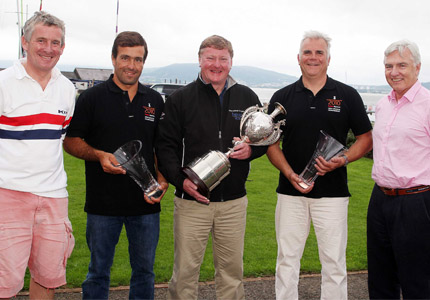
Martin Byrne, centre with trophy at the Dragon Nationals prizegiving
Crewed by longtime shipmate Adam Winklemann, and Portuguese sailmaker Pedro Andrade, Martin Byrne sailing Jaguar put his stamp on the racing from the start. In fact, the Dublin Bay boats were making hay, as Don O'Donoghue (also of Glandore) finished second overall, with Andrew Craig third. The level of racing is indicated by Klaus Diederichs, crewed by the formidable lineup of Andy Beadsworth and Jamie Lea, being back in fourth, while Simon Brien himself was in fifth, though he and his team of David Gomes and David Good took the prize for top totally amateur crew.
It was good to see the Dragons back in force where they mean a lot to sailing heritage. And it was in an area getting used to sporting success – Rory McIlroy's place is just up the road. But for now in sailing, Martin Byrne is ahead of the pack.
Dubliners Lead Belfast Lough Dragon Champs
Race 4 is currently underway.
Kin Fly the Flag at Edinburgh Cup
Royal North Sailor Simon Brien, sailing with long-standing crew David Gomes and Olympian Stephen Milne, were the top Irish boat at the 2010 Dragon Ednburgh Cup in Cowes this weekend. The last race showdown for the 2010 Dragon Edinburgh Cup in Cowes, hosted by the Royal Corinthian Yacht Club, Cowes, was a spectacular affair with the overall results of the regatta being decided on the final finish line. Russia's Olga White was the star of that sixth race, winning in impressive style to take third overall in the regatta. But while Olga led the fleet, the other big story of the day was happening back down the course as a dogfight of epic proportions took place between Germany's Klaus Diederichs, and Denmark's Poul Richard Hoj-Jensen for the right to go home with the Edinburgh Cup. The two went into the final race in first and second position respectively with just one point separating them and they proceeded to give the watching spectators a truly edge of the seat experience as they fought it out for supremacy.
Klaus Diederichs takes up the story, "We went into the last race with a 1 point lead and we needed to make sure that Poul Richard is not coming in the top three, so that was our race strategy for the day. We didn't have a good start at all and we missed him at the start. He went off to the left, so we had a bad start, we went to the right and had a good wind shift in our favour and we could basically tack back on him and he was by that time already quite a bit down the fleet and we said OK from now on we just need to control Poul.
"But Poul was steaming through the fleet and we were hanging onto him and he got ahead of us literally just a couple of hundred meters before that [the second weather mark] and from then on we had to chase him and make sure he doesn't climb up the fleet very fast as he normally does. And so we sailed downwind and the breeze got better and that was really good for us so he couldn't run away and we rounded the leeward mark just literally a boat [length] ahead of him. From then on it was a real match race, the last beat was a total match race up until the finishing line and with the breeze increasing it was really interesting sailing."
On the finish line Klaus Diederichs, sailing NOR272 Fever with Andy Beadsworth and Simon Fry, crossed the line in 14th place just a few inches ahead of Poul Richard Hoj-Jensen, sailing GBR745 Danish Blue with Theis Palm and Andrew Norden, to claim the historic Edinburgh Cup, presented to the Dragon Class for their Open British Championship by His Royal Highness The Duke of Edinburgh in 1949. Poul Richard-Hoj Jensen took second place overall and Olga White completed the podium line-up.
Olga White's challenge for that third place was a tough one too, but she rose to the challenge with confidence and style. Technically six people had the possibility to take third overall going into the final race. Lawrie Smith had held the position over night; White was seven points behind him in fourth, with Simon Brien two points behind her in fifth. Also still just in contention were Gavia Wilkinson-Cox, Mikhail Muratov and Louis Urvois.
White, sailing RUS69 Murka 7 with Vadim Statsenko and Martin Leifelt, got an excellent start and opted for the right side of the beat whilst most of her challengers went left. The race got underway just as the sea breeze was starting to come in and this resulted in a massive right-hander on the first beat. At the first mark White rounded just ahead of Julia Bailey with Mikhail Muratov third, Len Jones fourth, Mike Hayles fifth and Jamie Lea sixth. Both Smith and Brien had found themselves on the wrong side of the shift and Brien rounded in 19th place while Smith almost brought up the rear of the fleet in 29th. All White had to do now was hold onto a good position and pray that neither Smith nor Brien could pull off a major jump on the fleet.
Ultimately White successfully defended her lead all the way to the finish although she had to sail her socks off to do it with a hard fought tacking duel against Jones and Lea lasting the length of the final beat. On the line White took the honours, Jones finished second and Lea third. Brien and Smith did their best with Brien managing to pull back up into 10th place and Smith into 19th, but it wasn't anywhere near enough and so Simon Brien, sailing IRL212 Kin with Stephen Milne and David Gomes, took fourth place overall and Lawrie Smith, sailing GBR751 Alfie with Ossie Stewart and Bill Masterman, was fifth.
Speaking after racing Olga White was delighted with her first podium finish at an International Dragon Ranked Event. "It's the first time we've won a race in a regatta of this size, grade two or above, and it's the first time we've been on the podium so it's fantastic." She also joked about the competition between herself and husband and Murka team mate Mikhail Muratov saying, "Of course there's a little bit of rivalry between the two of use, although we never do anything nasty to each other, but we still like to win between the two of us so we have two races going on, one between me and Mischa and the other race as well. Mischa's getting a bit upset about being recognised as the person that's always following his wife - so we'll try and keep that up!"
In the Corinthian Division for the all-amateur crews Ireland's Simon Brien, took overall victory from local Solent sailor Eric Williams, sailing GBR682 Ecstatic with Joanna Richardson and Rory Patten. Cowes Dragon Fleet Captain Richard Cullen, sailing GBR669 Supremacy with Alex Dobson and Matthew Hill, rounded out the Corinthian top three. The Corinthian Division is a new introduction to the Dragon fleet and the organisers were delighted that it generated such an enthusiastic response with a third of the fleet qualifying to compete. Speaking after racing Richard Cullen said, "I was delighted how well some of the Corinthian sailors were doing against the professionals at times this week. It's really important for us to encourage the Corinthian teams as without them the grass roots of local Dragon fleets around the world will not be able to continue to build world class events with good numbers of competitors. Congratulations to Simon and Eric - we've had fantastic racing all week."
At the final prize giving Regatta Chairman Colonel Tony Singer paid tribute to all the many volunteers who had worked tirelessly to make this event such a huge success. This was without doubt the most competitive fleet ever assembled for a Dragon Edinburgh Cup and this combined with outstanding race management, a superb social programme and exceptional weather conditions ensured that not only was it the most competitive, but that it was also one of the most enjoyable. He thanked the Royal Corinthian Yacht Club who hosted the regatta, the Cowes Corinthian Yacht Club, Royal London Yacht Club, Island Sailing Club, Royal Yacht Squadron and Sir Max Aitken Museum, which all hosted social events for the sailors during the week and Aberdeen Asset Management for their generous ongoing sponsorship support of the British Dragon Association and the Edinburgh Cup.
Although sadly unable to attend the prize giving, Martin Gilbert, Chief Executive of Aberdeen Asset Management, sent a message to the competitors and the organisers saying "Congratulations to Edinburgh Cup winner Klaus Diederichs and his crew. We're delighted to continue our support of the British Dragon Association and the Edinburgh Cup. Well done to everyone involved in the organisation of this outstanding event."
The South Caernarvonshire Yacht Club, Abersoch, will host the 2011 Dragon Edinburgh Cup, which will be held between 13-16 July 2011
Dragon Edinburgh Cup is Sponsored By Aberdeen Asset Management


























